




Related bibliographies:
Reptiles
 Turtles Turtles
 Testudinidae Testudinidae
Africa






































































































































































































































































































































| |

Bibliography of the genus
Stigmochelys (Leopard Tortoise)

(Reptilia: Testudines: Testudinidae)
Note:
In order to limit redundancy, relevant literature indexed in the related bibliographies in the left column may not have been included in this page. For a comprehensive search of literature, these bibliographies should therefore also be consulted.
Stigmochelys pardalis
 |
Anonymous. 2006. Fiche d'elevage. Cheloniens 1: 45-46.
Anonymous. 2015. Tierwelt Herberstein Steirischer Landestiergarten GmbH Siamang exhibit. Zoos' Print 30(6): 17-19.
Abegg, D. 2014. Feldarbeit mit der Pantherschildkröte Stigmochelys pardalis (Bell, 1828) in der Kalahari-Wüste. Testudo 23(1): 24-32.
Amer, S.A.M.; Sallam, F.A.E. 2006. Features of mitochondrial DNA in African tortoise "Geochelone pardalis" and their phylogenetic implications. Journal of the Egyptian German Society of Zoology 49(C): 163-176.
Archer, W.H. 1948. The mountain tortoise (conclusion). African Wild Life 2(3): 74-77.
Archer, W.H. 1948. The mountain tortoise, Geochelone pardalis. African Wild Life 2: 75-78.
Baker, P.J.; Kabigumila, J.; Leuteritz, T.; Hofmeyr, M.; Ngwava, J.M. 2015. Stigmochelys pardalis. The IUCN Red List of Threatened Species 2015: e.T163449A1009442. http://dx.doi.org/10.2305/IUCN.UK.2015-4.RLTS.T163449A1009442.en.
Bally, P.R.O. 1945. Tortoises eating bones. Journal of the East Africa Natural History Society 18(3-4): 163.
Bally, P.R.O. 1952. Einige Beobachtungen an der ostafrikanischen Pantherschildkröte, Testudo pardalis. Zoologische Garten N.F. (Leipzig) 19: 236-238.
Benzien, J. 1958. Beobachtungen über die Entwicklung der Zeichnung bei Pantherschildkröten - Testudo pardalis babcocki Loveridge. DATZ (Die Aquarien- und Terrarien-Zeitschrift) 11: 121.
Bertram, B.C.R. 1979. Homing by a leopard tortoise in the Serengeti. African Journal of Ecology 17(4): 245-247.
Branch, W.R.; Baard, E.; Villiers, A. de 1989. Some exceptionally large southern African chelonians. Journal of the Herpetological Association of Africa 37(1): 53-54.
Broadley, D.G. 1989. Geochelone pardalis leopard tortoise (English) Bergskilpad (Afrikaans). Occasional Papers of the IUCN Species Survival Commission 5: 43-46.
Busson, F.; Loehr, V.J.T. 2011. Natural history notes: Stigmochelys pardalis (Bell 1828). Leopard Tortoise. Diet. African Herp News 54: 12-13.
Bustard, R. 1963. Natural breaks. Aquarist and Pondkeeper 28: 112-113.
Bustard, R. 2002. Keeping and breeding leopard tortoises (Geochelone pardalis), Part 1. Egg-laying, incubation, and care of hatchlings. Herpetological Bulletin 80: 26-30.
Bustard, R. 2002. Keeping and breeding leopard tortoises (Geochelone pardalis). Part 2. Accommodation, diet and feeding. Herpetological Bulletin 81: 12-16.
Cairncross, B.L. 1946. Notes on South African tortoises. Annals of the Transvaal Museum 20(4): 395-397.
Cairncross, B.L.; Greig, J.C. 1977. Note on variable incubation period within a clutch of eggs of the leopard tortoise. (Geochelone pardalis) (Chelonia: Cryptodira: Testudinidae). Zoologica Africana 12(1): 255-256.
Coakley, J.; Klemens, M. 1983. Two generations of captive-hatched leopard tortoises, Geochelone pardalis babcocki. Herpetological Review 14(2): 43-44.
Coles, R.W. 1985. Reproductive data:- the leopard tortoise (Geochelone pardalis). Herptile 10(1): 28-29.
Coombs, G. 2016. Natural history notes: Stigmochelys pardalis (Leopard Tortoise). Road mortality. Herpetological Review 47(3): 449-450.
Cunningham, P.L. 2006. Preliminary results on the movement, home range and diet of Geochelone pardalis and Psammobates tentorius verroxii in Namibia. Chelonii 4: 112-114.
Cunningham, P.L.; Adank, W. 2003. Geochelone pardalis. Leopard Tortoise. African Herp News 36: 9-10.
Cunningham, P.L.; Nicholas, A. 2005. Geochelone pardalis (Bell, 1828). Leopard Tortoise. Prey. African Herp News 38: 23-24.
Cunningham, P.L.; Simang, A.; Ndara, L. 2006. A dietary comparison of two sympatric tortoises in the highland savanna biome from central Namibia. Journal Namibia Scientific Society 54: 19-29.
Dauth, J.; Lourens, V.; Dreyer, M.J.; Rechav, Y.; Fielden, L.J.; Clarke, F.C.; Mackie, A.J. 1990. Bisalbuminaemia in the mountain tortoise Geochelone pardalis. South African Journal of Wildlife Research 20(4): 146-147.
Douglas, R.M.; Rall, M. 2006. Seasonal shelter selection by leopard tortoises (Geochelone pardalis) in the Franklin Nature Reserve, Free State, South Africa. Chelonian Conservation and Biology 5(1): 121-129.
Downs, C.T.; McMaster, M. 2006. Base ecologique et parametres demographiques de la Tortue leopard Geochelone pardalis en Afrique du sud. Cheloniens 1: 22-28.
Drabik-Hamshare, M.; Downs, C.T. 2017. Aspects of the home range ecology of the leopard tortoise in the semi-arid central Karoo: An area threatened with fracking. Journal of Arid Environments 144: 31-41
Eady, B. 1987. A case of anorexia in a juvenile leopard tortoise. Rephiberary 112: 3-4.
Eglis, A. 1963. Nesting of a parrot-beaked tortoise. Herpetologica 19: 66-68.
Ernst, C.H.; Laemmerzahl, A.F.; Holland, M.M.; Roscoe, R. 2002. Reproduction in four species of turtles at the National Zoological Park, Washington D.C. USA. Herpetological Bulletin 81: 17-21.
Esler, K.J. 1991. Geochelone pardalis. Diet. Journal of the Herpetological Association of Africa 39: 27.
Fife, R. 1990. Keeping leopard tortoises in southern Arizona (Geochelone pardalis). Vivarium (Lakeside) 2(4): 8-11.
Freid, R. 1989. Captive reproduction of leopard tortoises (Geochelone pardalis). Desert Tortoise Council Proceedings of Symposium 10 1985 [1989]: 100-101.
Fritz, U.; Daniels, S.R.; Hofmeyr, M.D.; González, J.; Barrio-Amorós, C.L.; Siroky, P.; Hundsdörfer, A.K.; Stuckas, H. 2010. Mitochondrial phylogeography and subspecies of the wide-ranging sub-Saharan leopard tortoise Stigmochelys pardalis (Testudines: Testudinidae) - a case study for the pitfalls of pseudogenes and GenBank sequences. Journal of Zoological Systematics and Evolutionary Research 48(4): 348-359.
Glass, M.; Burggren, W.W.; Johansen, K. 1978. Ventilation in an aquatic and terrestrial chelonian reptile. Journal of Experimental Biology 72: 165-179.
Greig, J.C.; Boycott, R.C. 1978. Our land tortoises. African Wild Life 32(2): 39-42.
Grobler, J.H. 1982. The leopard tortoise in the Mountain Zebra National Park. Koedoe 25: 49-53.
Hailey, A. 1995. Diets and food preferences of two South African tortoises: the implications for niche separation. South African Journal of Wildlife Research 25(2): 65.
Hailey, A. 1997. Digestive efficiency and gut morphology of omnivorous and herbivorous African tortoises. Canadian Journal of Zoology 75(5): 787-794.
Hailey, A.; Coulson, I.M. 1995. Habitat association of the tortoises Geochelone pardalis and Kinixys spekii in the Sengwa Wildlife Research Area, Zimbabwe. Herpetological Journal 5(4): 305-309.
Hailey, A.; Coulson, I.M. 1996. Differential scaling of home-range area to daily movement distance in two African tortoises. Canadian Journal of Zoology 74(1): 97-102.
Hailey, A.; Coulson, I.M. 1999. The growth pattern of the African tortoise Geochelone pardalis and other chelonians. Canadian Journal of Zoology 77(2): 181-193.
Hailey, A.; Lambert, M.R.K. 2002. Comparative growth patterns in Afrotropical giant tortoises (genus Geochelone). Biota (Race) 3(1-2): 61-66.
Hailey, A.; Lambert, M.R.K. 2002. Comparative growth patterns in Afrotropical giant tortoises (Reptilia Testudinidae). Tropical Zoology 15(1): 121-139.
Hailey, A.; Loveridge, J.P. 1998. Body temperatures of captive tortoises at high altitude in Zimbabwe, with comments on the use of "living models". Herpetological Journal 8(2): 79-84.
Hassen, L.; Cunningham, P.L. 2012. Natural history notes: Stigmochelys pardalis Bell, 1928. Leopard Tortoise. Predation. African Herp News 57: 10-11.
Herz, M. 2012. Die Panther-Schildkröte - Stigmochelys pardalis. Natur und Tier-Verlag, Münster. 63 pp.
Herz, M. 2017. Auf der Suche nach Pantherschildkröten in Ostafrika: Anmerkungen zu Stigmochelys pardalis in Afrika. Schildkröten im Fokus 14(2): 4–13.
Hine, M.L. 1978. Reproduction of the leopard tortoise in captivity. British Herpetological Society Newsletter 18: 8-11.
Howells, W.W. 1981. Gymnogene versus leopard tortoise. Honeyguide 105: 24.
Humphreys, C.W.; Probert, A.J. 1988. A note on some nematodes and ticks recovered from the tortoises Geochelone pardalis babcocki Loveridge 1935 and Kinyxis belliana speckii Broadley 1981 from Zimbabwe together with a comment on their effects on post hibernation anorexia. Zimbabwe Science News 22(9-12): 119-120.
Iverson, J.B. 2006. Statut taxonomique de la tortue leopard, Stigmochelys pardalis. Cheloniens 1: 20-21.
Jackson, G.G. 2011. Reintroduction de la tortue leopard, lecons a retenir. Cheloniens 22: 44-45.
Jaques, J. 1969. Hatching and early life of mountain tortoise. African Wild Life 23: 95-104.
Jost, U. 1999. Die ostafrikanische Pantherschildkröte Geochelone pardalis babcocki (Loveridge, 1935): Bemerkungen zur Haltung, Nachzucht unf Aufzucht. Emys 6(6): 5-31.
Jost, U. 2001. Zur Haltung und Nachzucht der ostafrikanischen Pantherschildkröte Geochelone pardalis babcocki (Loveridge, 1935). Draco 2(4) (8): 34-49.
Jost, U. 2006. Keeping and breeding the East African leopard tortoise Geochelone pardalis babcocki (Loveridge, 1935). pp. 382-392. In: Artner, H.; Farkas, B. & Loehr, V. (eds.). Turtles: proceedings: International Turtle & Tortoise Symposium, Vienna 2002. Edition Chimaira, Frankfurt am Main. 618 pp.
Kabigumila, J. 1995. Conservation biology of the tropical leopard tortoise (Geochelone pardalis babcocki Loveridge) in Tanzania. pp. 123-126. In: Devaux, B. (ed.). International Congress of Chelonian Conservation. France - Gonfaron - Tortoise Village - 6th to 10th of July 1995. Proceedings. Editions SOPTOM, Gonfaron, France. 344 pp.
Kabigumila, J. 2000. Growth and carapacial colour variation of the leopard tortoise, Geochelone pardalis babcocki, in northern Tanzania. African Journal of Ecology 38(3): 217-223.
Kabigumila, J. 2001. Sex and age variation in the anal scute of the leopard tortoise, Geochelone pardalis, in Serengeti National Park, Tanzania. African Journal of Ecology 39(2): 223-225.
Kabigumila, J. 2001. Sighting frequency and food habits of the leopard tortoise, Geochelone pardalis, in northern Tanzania. African Journal of Ecology 39(3): 276-285.
Kabigumila, J. 2001. Size composition and sex ratio of the leopard tortoise (Geochelone pardalis) in northern Tanzania. African Journal of Ecology 39(4): 393-395.
Lambert, M. 1995. On geographical size variation and utilization of the leopard tortoise, Geochelone pardalis, in subsaharan Africa. pp. 115-117. In: Devaux, B. (ed.). International Congress of Chelonian Conservation. France - Gonfaron - Tortoise Village - 6th to 10th of July 1995. Proceedings. Editions SOPTOM, Gonfaron, France. 344 pp.
Lambert, M. 1995. On geographical size variation, growth and sexual dimorphism of the leopard tortoise, Geochelone pardalis, in Somaliland. Chelonian Conservation and Biology 1(4): 269-278.
Lambert, M.; Campbell, K.L.I.; Kabigumila, J.D. 1998. On growth and morphometrics of leopard tortoises, Geochelone pardalis, in Serengeti National Park, Tanzania, with observations on effects of bushfires and latitudinal variation in populations of eastern Africa. Chelonian Conservation and Biology 3(1): 46-57.
Lambert, M.R.K. 2001. On sustainable utilization of the leopard tortoise Geochelone pardalis in populations of eastern Africa: size frequency, latitude and ecology. pp. 97-105. In: Valakos, E.; Lymberakis, P.; Pafilis, P. & Mylonas, M. (eds.). Herpetologia candiana. Natural History Museum of Crete, Irakleio. 151 pp.
Lambiris, A. 2006. Preliminary note on major shell trauma in a Leopard Tortoise, Geochelone pardalis babcocki. African Herp News 40: 15-16.
Lambiris, A.J.L. 1999. The Leopard Tortoise, Geochelone pardalis: one taxon or two? African Herp News 28: 18-19.
Leakey, B. 1944. Some notes on the breeding habits of the leopard tortoise (Testudo pardalis Bell). Journal East Africa & Uganda Natural History Society 17(5-6): 396-398.
Lloyd, A. 2010. The leopard tortoise in captivity. Herptile 35(2): 73-77.
Malan, G.; Branch, W.R. 1992. Predation on tent tortoise and leopard tortoise hatchlings by the pale chanting goshawk in the Little Karoo. South African Journal of Zoology 27(1): 33-35.
Mason, M.C.; Kerley, G.I.H.; Weatherby, C.A.; Branch, W.R. 1999. Leopard tortoises (Geochelone pardalis) in Valley Bushveld, eastern Cape, South Africa: specialist or generalist herbivores? Chelonian Conservation and Biology 3(3): 435-440.
Massana, J.S.; Silvestre, A.M. 2005. Stigmochelys pardalis taxonomy, ecology, and conservation of the leopard tortoise. Reptilia (GB) 43: 31-35.
Massana, J.S.; Silvestre, A.M. 2006. Taxonomie, Ökologie und Schutz der Pantherschildkröte (Stigmochelys pardalis). Reptilia (D) 10(56): 31-35.
Mattis, D. 1994. On paper-training a male leopard tortoise. Bulletin of the Chicago Herpetological Society 29(9): 197-199.
McMahon, M.L. 1990. Geochelone pardalis. Leopard tortoise. Egg incubation. Journal of the Herpetological Association of Africa 37: 51.
McMahon, M.L. 1991. Geochelone pardalis. Reproduction. Journal of the Herpetological Association of Africa 39: 27.
McMaster, M.K.; Downs, C.T. 2006. Do seasonal and behavioral differences in the use of refuges by the leopard tortoise (Geochelone pardalis) favor passive thermoregulation? Herpetologica 62(1): 37-46.
McMaster, M.K.; Downs, C.T. 2006. Population structure and density of leopard tortoises (Geochelone pardalis) on farmland in the Nama-Karoo. Journal of Herpetology 40(4): 495-502.
McMaster, M.K.; Downs, C.T. 2008. Digestive parameters and water turnover of the leopard tortoise. Comparative Biochemistry and Physiology Part A Molecular & Integrative Physiology 151(1): 114-125.
McMaster, M.K.; Downs, C.T. 2009. Home range and daily movement of leopard tortoises (Stigmochelys pardalis) in the Nama-Karoo, South Africa. Journal of Herpetology 43(4): 561-569.
McMaster, M.K.; Downs, C.T. 2013. Seasonal and daily activity patterns of leopard tortoises (Stigmochelys pardalis Bell, 1828) on farmland in the Nama-Karoo, South Africa. African Zoology 48(1): 72-83.
McMaster, M.K.; Downs, C.T. 2013. Thermal variability in body temperature in an ectotherm: are cloacal temperatures good indicators of tortoise body temperature. Journal of Thermal Biology 38(4): 163-168.
Mill, E. 2015. An experience report on the husbandry, propagation and status of the Leopard Tortoise (Stigmochelys pardalis) and Bell's Hinge-Backed Tortoise (Kinixys belliana) in Ethiopia. Part I. Radiata 24(1): 4-66.
Mill, E. 2015. Ein Erfahrungsbericht zur Haltung, Zucht und Situation der Pantherschildkröte (Stigmochelys pardalis) und der Nordostafrikanischen Gelenkschildkröte (Kinixys belliana) in Äthiopien. Teil I. Radiata 24(1): 4-66.
Mill, E. 2015. Ein Erfahrungsbericht zur Haltung, Zucht und Situation der Pantherschildkröte (Stigmochelys pardalis) und der Nordostafrikanischen Gelenkschildkröte (Kinixys belliana) in Äthiopien. Teil II. Radiata 24(2): 4-23.
Milton, S. 1992. Plants eaten and dispersed by adult leopard tortoises Geochelone pardalis (Reptilia: Chelonii) in the southern Karoo. South African Journal of Zoology 27(2): 45-49.
Milton, S.; Dean, R. 1993. The leopard tortoise in the Karoo. African Wildlife 47(1): 27-28.
Monadjem, A.; McCleery, R.A.; Collier, B.A. 2013. Activity and movement patterns of the tortoise Stigmochelys pardalis in a subtropical savanna. Journal of Herpetology 47(2): 237-242.
Mudde, P.; Visser, G. 1988. [The leopard tortoise (Geochelone pardalis)]. (In Dutch). Lacerta 46(12): 182.
Neron, K. 2006. Maintenance en captivite de la tortue leopard Stigmochelys pardalis (R. Bour 1984). Cheloniens 1: 30-37.
Nietzke, G. 1974. Testudo pardalis - Pantherschildkröte. Aquarium Aqua Terra 8(59): 221-222.
Noel-Hume, A. 1955. Care of Leopard tortoises (Testudo pardalis). Water Life 10(2): 76-77.
Patterson, R.W.; Boycott, R.C.; Morgan, D.R. 1989. Reproduction and husbandry of the leopard tortoise (Geochelone pardalis) in an alien habitat. Journal of the Herpetological Association of Africa 36(1): 75.
Peters, U. 1982. The breeding of endangered reptiles, a success story. Zoologische Garten 52(1): 21-28.
Philippen, H.D. 2006. Panther-Schildkröten Stigmochelys pardalis (Bell, 1828). Marginata 8: 10-15.
Pirog, E.J. 2008. Sulcata and Leopard Tortoises: A Complete Guide to Geochelone sulcata and Geocholone pardanis. T.F.H. Publications, Neptune City, New Jersey. 128 pp.
Pirog, E.J. 2010. The leopard tortoise Stigmochelys (=Geochelone) pardalis of Africa. Testudo 7(2): 11-23.
Poglayen Neuwall, I. 1985. Geglückte Zucht der Panther-Schildkröte (Geochelone pardalis babcocki). Zoologische Garten 53(3-5): 217-225.
Rall, M. 1986. [Ecological observations on the mountain tortoise population Geochelone pardalis Bell, 1828, of the Soetdoring Nature Reserve, Orange Free State]. (In Afrikaans). Koedoe 28 [1985]: 47-60.
Rall, M. 1988. Observations on the growth of the leopard tortoise Geochelone pardalis in captivity. Journal of the Herpetological Association of Africa 35: 7-8.
Rall, M.; Fairall, N. 1993. Diet and food preferences of two South African tortoises Geochelone pardalis and Psammobates oculifer. South African Journal of Wildlife Research 23(3): 63-70.
Ritz, J.; Hammer, C.; Clauss, M. 2009. Comparison of body size development in captive and free-ranging leopard tortoises (Geochelone pardalis). pp. 28-30. In: Wibbelt, G.; Kretzschmar, P.; Hofer, H. & Seet, S. (eds.). Proceedings of the International Conference on Diseases of Zoo and Wild Animals 2009, May 20th - 24th, 2009, Beekse Bergen/The Netherlands. Leibniz Institute for Zoo and Wildlife Research & European Association of Zoo and Wildlife Veterinarians, Berlin & Liebefeld-Berne. 361 pp.
Ritz, J.; Hammer, C.; Clauss, M. 2010. Body size development of captive and free-ranging Leopard Tortoises (Geochelone pardalis). Zoo Biology 29(4): 517-525.
Rödel, M.O.; Bussmann, R. 1992. Weitere Daten zur Verbreitung und Habitatwahl von Geochelone pardalis babcocki (Bell 1826), Pelomedusa subrufa subrufa (Lacepede 1788) und Pelusios sinuatus (Smith 1838) in Kenia. Sauria (Berlin) 14(2): 33-38.
Rose, W. 1961. Oviposition and growth of Testudo pardalis babcocki. Journal of the Herpetological Association of Rhodesia 14(1): 4-5.
Rowe, J.; Janulaw, J. 1971. A noteworthy conservation achievement. International Turtle and Tortoise Society Journal 5(4): 20-30.
Rowlands, B.W. 1988. Sympatry in land tortoises - resource partitioning: a need for research. Naturalist (Port Elizabeth) 32(1): 16-21.
Scantlebury, M.; Minting, P. 2006. Differences in resting metabolic rates of two southern African tortoises: Psammobates oculiferus and Geochelone pardalis. African Journal of Herpetology 55(2): 161-165.
Schleicher, A. 2013. Die Pantherschildkröte Stigmochelys pardalis (Bell, 1928). Testudo 22(3): 15-36. Title should read(Bell, 1828).
Seccareccia, V.J.; Lloyd, M.L.; Martin, J. 1997. Coagulation parameters of clinically normal radiated (Geochelone radiata) and leopard (Geochelone pardalis babcocki) tortoises. Proceedings of the Annual Conference of the Association of Reptilian & Amphibian Veterinarians 4: 89-91.
Simang, A.; Cunningham, P.L.; Henen, B.T. 2010. Color selection by juvenile Leopard Tortoises (Stigmochelys pardalis) in Namibia. Journal of Herpetology 44(2): 327-331.
Spitzweg, C.; Hofmeyr, M.D.; Fritz, U.; Vamberger, M. 2018. Leopard tortoises in southern Africa have greater genetic diversity in the north than in the south (Testudinidae). Zoologica Scripta 48(1) ["2019"]: 57-68.
Switak, K.H. 1984. Geochelone pardalis. Das Werden einer Pantherschildkröte. Aquarium (Minden) 18(183): 481-484.
Taylor, S.K.; Citino, S.B.; Zdziarski, J.M.; Bush, R.M. 1996. Radiographic anatomy and barium sulfate transit time of the gastrointestinal tract of the leopard tortoise (Testudo pardalis). Journal of Zoo and Wildlife Medicine 27(2): 180-186.
Velensky, P.; Velenska, N. 2006. Zucht der Südafrikanischen Pantherschildkröte (Stigmochelys pardalis pardalis (Bell, 1828)) im Zoo von Prag (Tschechische Republik) - Erste Resultate. Marginata 8: 16-20.
Velensky, P.; Velenska, N. 2013. Multigenerational breeding of the South African subspecies of the Leopard Tortoise (Stigmochelys pardalis pardalis) at Prague Zoo. Gazella 40: 57-74.
Vetter, H. 2005. Chelonian library: Leopard Tortoise and African Spurred Tortoise, Stigmochelys pardalis and Centrochelys sulcata. Edition Chimaira, Frankfurt am Main. 189 pp.
Visser, G.J.; Zwartepoorte, H.A. 1989. Breeding the leopard tortoise Geochelone pardalis. International Zoo Yearbook 28: 98-102.
Watt, G. 2012. Herpetoculture notes: Stigmochelys pardalis (Leopard Tortoise). Behavior. Herpetological Review 43(4): 608.
Weatherby, C. 1995. The South African mountain tortoise (Geochelone pardalis): home range, movement patterns, and site fidelity. pp. 118-120. In: Devaux, B. (ed.). International Congress of Chelonian Conservation. France - Gonfaron - Tortoise Village - 6th to 10th of July 1995. Proceedings. Editions SOPTOM, Gonfaron, France. 344 pp.
Wilson, V.J. 1960. Egg laying by a leopard tortoise (Testudo pardalis babcocki) in Northern Rhodesia. Journal of the Herpetological Association of Rhodesia 13: 8-9.
Wilson, V.J. 1968. The leopard tortoise, Testudo pardalis babcocki in eastern Zambia. Arnoldia Rhodesia 3(40): 1-10.
Wimberger, K.; Armstrong, A.J.; Downs, C.T. 2009. Can rehabilitated leopard tortoises, Stigmochelys pardalis, be successfully released into the wild? Chelonian Conservation and Biology 8(2): 173-184.
Wimberger, K.; Armstrong, A.J.; Downs, C.T. 2010. Welfare release of Babcock's leopard tortoise, KwaZulu-Natal, South Africa. pp. 108-112. In: Soorae, P.S. (ed.). Global re-introduction perspectives: 2010. Additional case-studies from around the globe. IUCN/SSC Re-introduction Specialist Group, Abu Dhabi. 352 pp.
Wimberger, K.; Armstrong, A.J.; Penning, M. 2011. Health checks of rehabilitated leopard tortoise, Stigmochelys pardalis, before release into the wild. South African Journal of Wildlife Research 41(2): 229-235.
Wolff, B. 2004. Description of some habitats of the leopard tortoise Geochelone pardalis (Bell, 1828) and a report on its captive husbandry and breeding. Radiata 13(3): 3-15.
Wolff, B. 2006. Biotope der Pantherschildkröte (Stigmochelys pardalis (Bell, 1828)) sowie Angaben über die Haltung und Nachzucht der Unterart Stigmochelys pardalis babcocki (Loveridge, 1935). Marginata 8: 21-30.
Zahner, H. 1992. Erfahrungen bei der Haltung und Zucht der Pantherschildkröte, Geochelone pardalis pardalis (Bell, 1828). Sauria (Berlin) 14(4): 15-19.
Zeitz, D.C. 1992. Husbandry and reproduction of leopard tortoises, Geochelone pardalis (Bell). pp. 71-75. In: Strimple, P.D. & Strimple, J.L. (eds.). Contributions in herpetology. Greater Cincinnati Herpetological Society, Cincinnati. 111 pp.
Zyl, J.H.M. van 1966. Home range of the leopard tortoise (Geochelone pardalis (Bell)) in the S.A. Lombard Nature Reserve, Bloemhof, Transvaal. Fauna and Flora (Pretoria) 17: 32-36.
Zylka, A. 1979. [The tortoise Geochelone pardalis pardalis]. (In Polish). Wszechswiat 1979(7-8): 173-174.
|
| | 


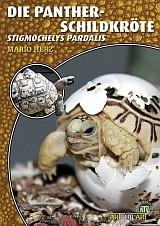

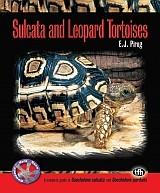

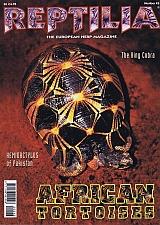

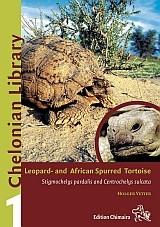










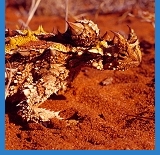



























































































































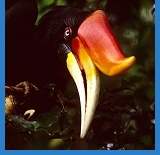




































|

